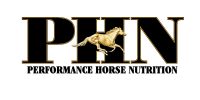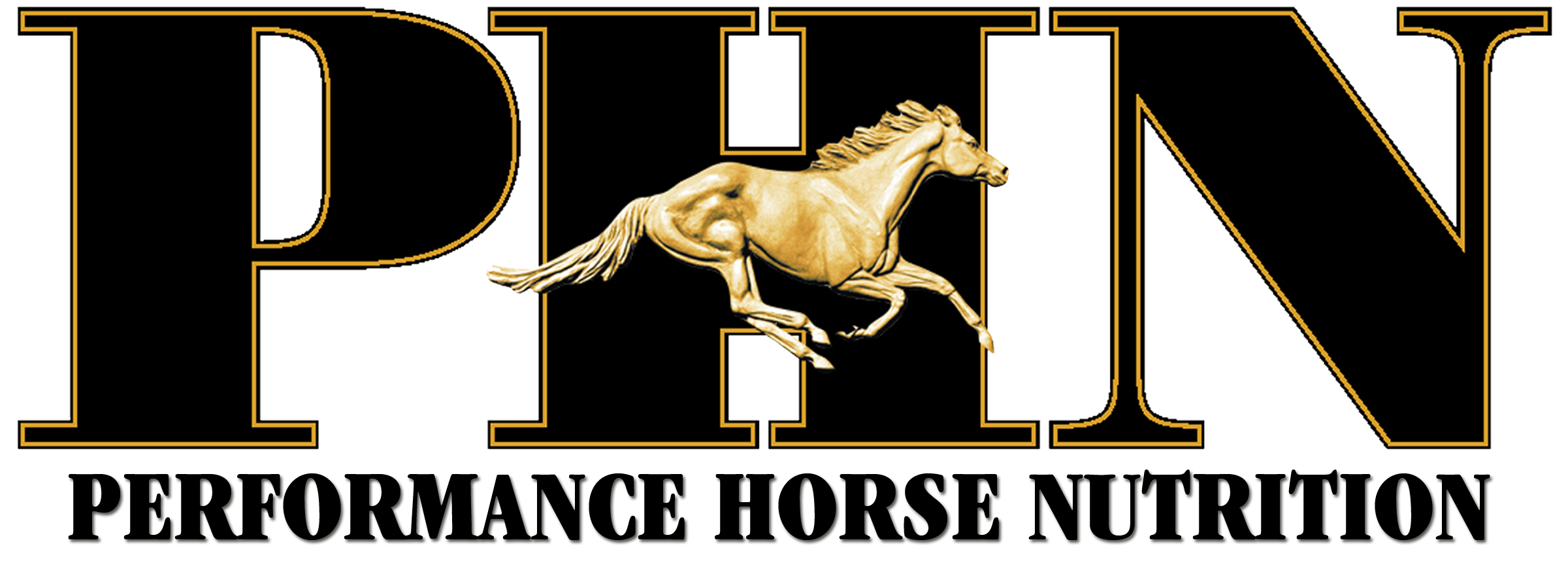FEEDING TO ENSURE
REPRODUCTIVE SUCCESS
2021

Written by Performance Horse Nutrition
The horse has evolved as a grazing animal and has the ability to adapt to changes in environmental conditions, in particular, to nutrient availability and quality. In the mare this adaptive strategy has affected when she is reproductively active. Mares
are considered seasonally polyestrous, meaning she has more than one estrous cycle during a specific time of the year. This time of year occurs in spring and early summer and is associated with an increase in daylight, temperature, and availability of nutrients.
If ample nutrients are not accessible to the horse either as metabolic stores (body fat) or available external nutrients (forage or feed), the mare will not become reproductively active. Reproduction can be considered a luxury to the horse, as it will only occur if signals within the animal trigger the brain to indicate that enough nutrients and body reserves are available to not only maintain oneself for survival, but also to sustain fetal growth and development. Understanding and manipulating this complex system of nutritional and metabolic signals occurring in the animal is critical to ensuring successful reproduction.
Reproductive success encompasses three critical phases which must all come together during the breeding season. These phases include cyclicity, conception and pregnancy.
Cyclicity is used to describe reproductive cycling in the mare. As described above the mare is only reproductively active during the spring and summer months otherwise known as the breeding season. During the winter in a typical mare, these reproductive cycles stop. The ability for the mare to resume normal cycling behavior early in the breeding season is step one in the path to ensuring reproductive success. The ability for the mare to conceive is step two. One may have normal reproductive cycles but still not be able to conceive which halts the mare’s ability to reproduce. The capacity to maintain a pregnancy and provide optimal nutrition for healthy fetal growth and development is the final step in this sequence of events. A breakdown at any point in this series would be detrimental if not disastrous to ensuring a successful breeding program with your mare.
Nutritional management is a simple, yet cost effective tool that we can apply to ensure normal cyclical behavior, improved conception rates and increased pregnancy maintenance in mares to ensure overall reproductive success. Body condition scoring serves as an effective means to determine the nutritional needs of your mare. Using a numeric scoring system from 1 to 9, we can estimate the animal’s body energy reserves. This information can be used to adjust feeding regimes to reach optimal body condition. The optimal body condition score for a mare coming into the breeding season is between 5 and 7. If a mare exhibits a body condition score at either end of the scale, reproductive efficiency is decreased.
The effect of nutrition and body condition on reproduction in mares has been clearly illustrated. Mares coming into the breeding season with an optimal body condition score (5-7) start cycling earlier than mares with a low body condition (less than 5). Thinner mares also have difficulty conceiving and maintaining pregnancy as compared to mares in optimal body condition. Some obese mares continue to cycle throughout the winter when, typically, reproductive cycling is shut down. The impact of energy intake and body condition on the reproductive performance of the mare has also been described where a high-energy diet in thin mares transitioning from winter shortened the interval to first ovulation as compared to those on a low energy diet. This increase in dietary energy, however, does not benefit mares that are already in an optimal or fat body condition. A mare that is very thin, either condition score 1 or 2 at the beginning of the breeding season, should be placed on a gradual increased plan of nutrition in order to restore body weight. In this instance it would be advisable to wait until the following year to try and breed her again as this will allow her time to gain and maintain weight and resume normal reproductive cycling behavior before putting her through the stresses of trying to get her in foal. If the mare is a 3 or 4 in body condition score at the beginning of the breeding season, there is hope that you can increase her condition and resume cycling to be able to breed her in that year. In order to do this, her caloric intake must be increased. It is assumed that in order to increase body condition by one unit (e.g. from 4 to 5) the mare must increase her weight by 45 lbs. In order to gain this weight, she requires approximately 40% more energy per day over a 60 day period than if she was just maintaining.
Some obese mares may continue to cycle throughout the winter resulting in negative repercussions for keeping mares in this condition. In humans and rodents obesity contributes to infertility, poor pregnancy and impaired fetal well-being. Obesity has been associated in horses and ponies with decreased insulin sensitivity, and both obesity and decreased insulin sensitivity have been associated with decreased reproductive function in mares. Obese mares can have a longer interval between ovulations which can be due to a persistent corpus luteum. This makes the obese mare more difficult to rebreed if an initial breeding is not successful thereby increasing the cost incurred to the owner.
The way in which we manage and house horses can also impact reproductive activity and success. Mares that were housed inside at night and allowed minimal access to a grass pasture for 4 to 6 hours during the day began cycling later in the breeding season compared to mares that were kept in a dry-lot during the winter and fed hay but were then allowed free access to lush spring pasture. Where pasture is available, free choice access is most advantageous. This also enables the mare to adjust her body clock with actual daylight hours rather than trying to use artificial light.
The recently revised version of the nutrient requirements for horses has expanded the requirements for gestation from early, mid and late gestation to less than 5 months and then specific requirements for each subsequent month (NRC). Previous thoughts on fetal development placed most nutritional emphasis on the last phase of gestation. We now appreciate that critical organs are developing during early and mid-gestation, and specific nutrients are critical for their development. For example, the heart has begun development, and a heart beat can be visualized via ultrasonography by approximately day 24. Minerals such as copper and zinc and vitamins A & D are crucial for healthy development of this organ. When developing nutritional programs for broodmares, the emphasis must be placed on balanced vitamin and mineral supplementation which are in accordance with the requirements set out by the NRC, 2007.
When considering the mare’s diet and condition, we must also be conscious of the effects these parameters have on fetal development.
Nutrition is the major intrauterine environmental factor that alters expression of the fetal genome and may have lifelong consequences. This concept has been termed “fetal programming” and has led to the theory of “fetal origins of adult disease.” Namely alterations in fetal nutrition and endocrine status may result in developmental adaptations that permanently change the structure, physiology, and metabolism of the offspring, thereby predisposing them to metabolic, endocrine and physical disruptions later in life.
Many factors play complex roles in equine reproduction. Nutritional management is a simple yet cost effective method that can be utilized to begin ensuring reproductive success. Combining visual aids such as body condition scoring with balanced nutrition can enable horse owners to be more proactive in the care and management of their broodmares.

